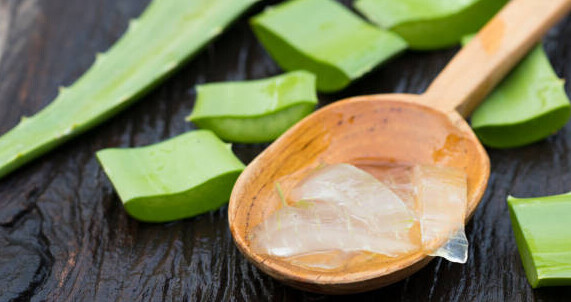History is so important in all aspects of our lives. And yet, it is so often ignored in the story of health and wellness. We often know the dates of certain things like when Penicillin was discovered or when a particular process like the x-ray was developed, but when it come to our natural health, we often do not realize that history is so important!
A MAJOR STEP IN NATURAL HEALTH
The passage of the Dietary Supplement Health and Education Act of 1994 (DSHEA) led to the further creation of many new dietary formulations and the further discussion of one of the most important health discoveries of modern times: the pursuit of glycans and the development of the glycosciences. Glycans and their importance have not traditionally been a subject of study in most medical schools. Yet, they are now being recognized as being a part of the physical function of most every bodily activity.

ONE OF THE MOST IMPORTANT GLYCANS
One of the most important glycans is Acemannan from the Aloe Vera plant. The DSHEA opened up great interest in developing natural formulations for human health. When I first entered the Wellness arena no one discussed the importance of glycans. In fact, few were even conscious of the word! Today there are thousands of citations in scientific works regarding the importance of glycans and especially Acemannan.
A VERY IMPORTANT WORK TO BE AWARE OF
The study of glycans has become so important that the Institute of Health recently published “The Transformation of the Glycosciences.” You can see a very interesting abstract here. https://www.nap.edu/resource/13446/Glycoscience-Report-Brief-Final.pdf I encourage you to take a few minutes and read this four page compilation. Note the bibliography attached to it! Even the Chinese government has gotten into the act by publishing “A NEW BIOMATERIAL DERIVED FROM ALOE VERA—ACEMANNAN FROM BASIC STUDIES TO CLINICAL APPLICATIION.”
This article does a great job highlighting the importance of history in understanding health, especially natural health practices. The focus on glycans and Acemannan from Aloe Vera is fascinating—I wasn’t aware of how crucial these were to our bodily functions until now!
Do you think there’s a specific reason why glycans haven’t been more widely studied or discussed in the medical field until recently? And with the rise in awareness of alternative medicine, do you see glycosciences becoming a more central part of mainstream health practices in the near future?
Thanks for sharing this insightful information!
Very thoughtful comments, Jonelle. In the 1980s when Dr. Bill McAnalley and Carrington Laboratories isolated acemannan they wanted to turn it into a pharmaceutical drug. They could not kill any mice in the LD50 tests and could not develop a drug. Check out the article I referenced in my post. Yes, I see glycans becoming extremely important in several fields.
I completely agree—history plays a crucial role in shaping our understanding of health and wellness! I’ve used aloe vera myself and found its healing properties remarkable (I unfortunately killed my plants when I left them outside overnight and a frost killed them). It’s fascinating how the study of glycans, especially Acemannan, is gaining recognition. It shows there’s so much more to discover in natural health that we’re only beginning to explore!
How very true that we have a tremendous amount to learn! My friend, Dr. Lendon Smith, MD (now deceased) had to give up his medical license to continue talking about vitamin C!
Hi Phil,
I completely agree that history plays a vital role in understanding our approach to health and wellness. The insights you’ve shared about glycans, especially Acemannan from Aloe Vera, are fascinating. It’s remarkable how something as overlooked as glycans is now gaining recognition for its importance in bodily functions.
Do you think the medical field will embrace glycoscience more widely in the coming years, or do you think big pharma has too much influence on the direction of health discussions?
Looking forward to your thoughts!
Opa
Great questions, Opa! Back in the 1980s Carrington Laboratories did much of the original acemannan research and wanted to develop a pharmaceutical drug. Because acemannan could not kill mice in the LD50 tests they could not go on with the drug development. Back then there was very little published research. Today there are thousands of articles from all over the world. Dr. McAnalley and I were on a bus in London going to Heathrow one night and I asked him that same question, His response was that once acemannan became “standard of care” then it would become popular and accepted usage. Developing natural care products is often very difficult because they are difficult to patent or turn into acceptable treatment modalities and thus cannot be profitable to major drug companies. Mannatech, Inc. (Texas) has taken the route of developing nutritional products using acemannan and they have become the world leader in glyconutritional products.